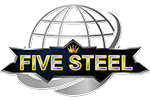Modern curtain wall design generally require structural supports as strong as they are versatile to keep pace with today’s increasingly large free spans, challenging angles, and sophisticated glass-clad aesthetics. Steel curtain wall frames would be regarded such a good option in curtain wall construction today.

For a long time, steel’s reputation as the workhorse of the modern building industry is well-earned. From soaring bridges to skyscrapers, it is able to withstand some of the most demanding structural loads without deforming, splitting, and even cracking over time. Despite its exceptional performance, manufacturing limitations have prevented its widespread use as the primary framing material in glazed curtain wall assemblies. However, in recent years, advanced processing methods have overcome this challenge. Some curtain wall suppliers have developed all component parts to the point where a complete system is often available, including:
1) connection detailing and hardware;
2) gasketing;
3) exterior pressure plates and cover caps; and
4) complementary door and entry systems, as well as detailing.
Furthermore, a complete curtain wall system would be helpful to simplify and standardize fabrication and installation methodologies, while still meeting the higher performance criteria required of modern curtain wall constructions—regardless of the framing material selected. For example, water resistance can be as much as 25 percent greater in an off-the-shelf steel curtain wall system than that of a conventional extruded aluminum curtain wall system. Also, air penetration is almost non-existent in steel curtain walls.
If you have made the decision on the selection of steel curtain wall in the building project, there are a couple of considerations for using steel to its full capacity in complex curtain wall applications. Specifically speaking, steel is strong and has a high load-carrying capacity with a Young’s modulus of approximately 207 million kPa (30 million psi), compared to aluminum, at approximately 69 million kPa (10 million psi). This allows design professionals to specify steel curtain wall systems with greater free spans (be it vertical height and/or horizontal module width) and reduced frame dimensions than conventional aluminum curtain walls with similar dimensions and applied loads. In addition, a steel profile is generally two-thirds the size of a comparable aluminum profile while meeting the same curtain wall performance criteria. Steel’s inherent strength allows it to be used in non-rectangular grids, where the length of the frame member might be longer than is typically required in conventional, rectangular horizontal/vertical curtain wall grids. In recent years, due to advanced steel processing methods, it can attach to steel mullions of different shapes, including hollow-, I-, T-, U-, or L-channels, and custom mullions. With a reasonable curtain wall cost, it would be amazing for you to have various steel curtain walls available for your building project.
Send your message to us:
Post time: Nov-01-2021




